Now, every time I go back to my hometown and see the houses, ponds, rivers, and fields, I feel a pang of sadness at the changes.
It's not a natural transformation, like the canopy of trees becoming wider, the house looking older, or the flowers in the garden becoming more colorful... but rather the devastation caused by human actions.
Just nearly half a century ago, every evening the whole village would be bustling with the sound of birds gathering at their nests. Just like in the morning, every garden and along the banks of the ponds and swamps would be filled with the sound of birdsong.
Then came the seasons when locusts swarmed the fields, the harvest nights when swarms of water beetles, seeing the lights, flew in droves across the verandas, the first rainy nights of summer when frogs croaked like drums across the fields near and far, and carp swam in long lines across the water, longer than the cars lined up during rush hour in Hanoi , and somewhere along the edge of the ponds, the fragrant scent of civets wafted through the air...
And after every rain, wild plants sprout profusely on riverbanks, field mounds, around ponds and lakes, along roadsides, in garden corners, and along house walls. In some dreams, I see plants growing all over me, and birds and insects perching all over me.
But in just those few years, the magnificent and splendid nature in which I lived has vanished. I'm once again plagued by nightmares of myself lying on scorching hot stones, with the sky above me like an unplastered ceiling. In my grief over the loss of that world of chlorophyll, animals, and insects, I remember the seasons of wild vegetables in my village.
Every time I recall the nature of those bygone years, I see around me flourishing and overflowing with emotion: sweet potato leaves, bean leaves, water spinach, morning glory, fig leaves, fig leaves, guava buds, bamboo shoots, chili leaves, purslane, spinach, watercress, sorrel, ground ivy, purslane, mugwort, white watercress, red watercress, white basil, coin plant, young rice fruit, gourd fruit, banana stem, banana root, banana flower, papaya pulp, bitter melon leaves, potato leaves, gourd shoots, young gourd leaves, loofah buds, loofah shoots, young loofah leaves, yam, spotted sweet potato stems, cassava leaves, fig fruit, turmeric leaves, galangal leaves, lotus root, lotus stem, water lily stems, water lily buds...
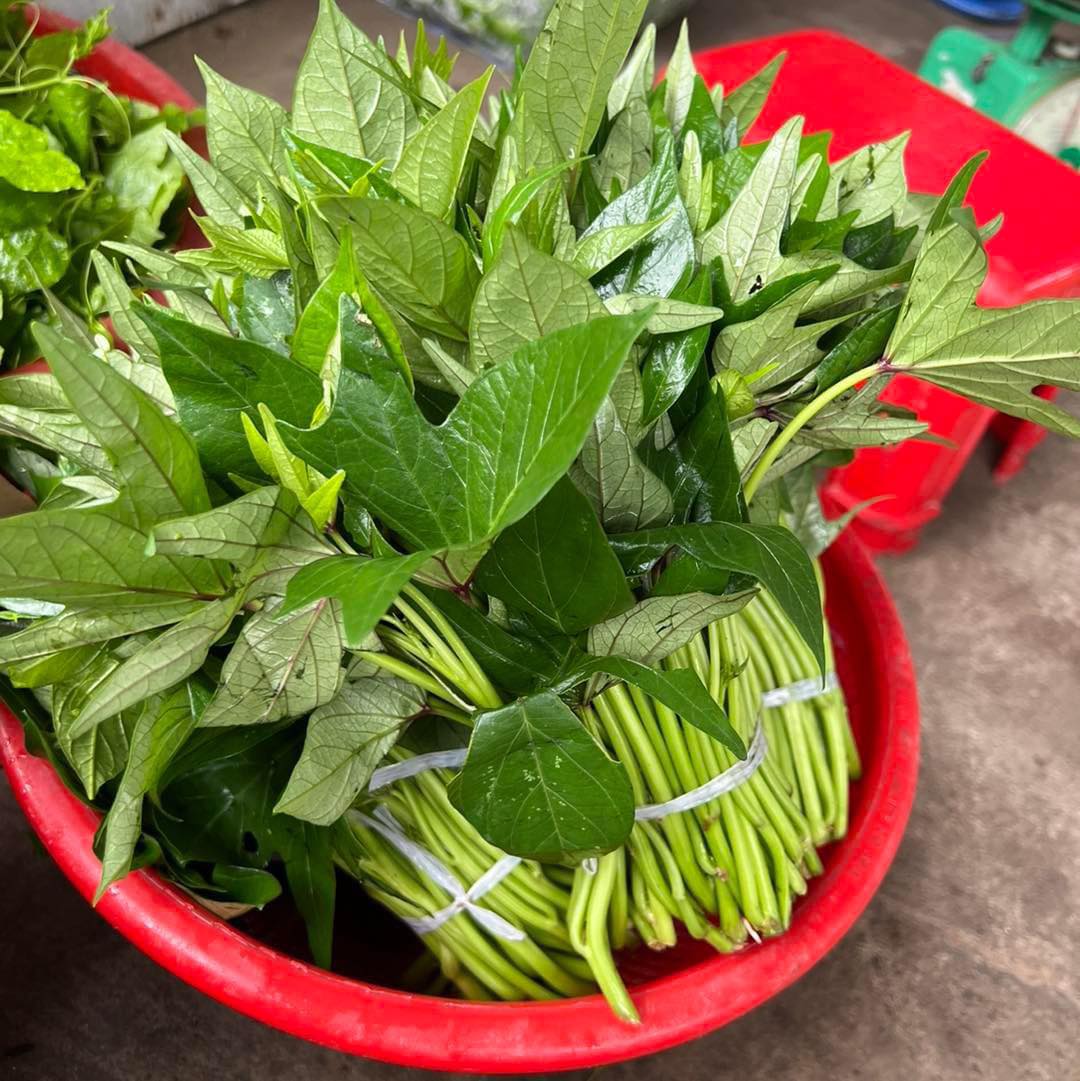
Sweet potato leaves (sweet potato shoots).
Everything I've just described is what I ate throughout my childhood years living in my village, things I can still remember. Every day, during their breaks from work, the farmers would quickly pick wild vegetables and catch a few dozen crabs, and by lunchtime they would have a delicious bowl of soup.
Whenever someone in the family suffered from insomnia, my mother would pick the leaves of the Barringtonia tree, crush them, and cook them with clams or crabs. Barringtonia leaves have a nutty and sweet taste. Barringtonia leaf soup, like mulberry leaf soup, is truly a sedative. Everyone knows about mulberry trees, but not many people know about Barringtonia trees.
The vông tree is a fairly large woody tree. Its fruit resembles a rice grain but is larger and longer. In some places, it's also called the cotton tree because when the fruit ripens, the four segments of the shell split open like a rice grain, revealing a handful of cotton inside. When the wind blows, the vông tree's cotton is carried throughout the village.
One of the vegetables that makes a delicious side dish with crab soup cooked in fermented rice is water spinach. Water spinach grows in rice paddies.
The water spinach plant resembles the sorrel plant. Wherever the rice paddy water is deep, the water spinach grows long and wide. After washing the water spinach, chop it into pieces about two finger lengths long, dip it in soy sauce, and eat it with crab soup cooked with fermented rice. You could eat a whole basketful and still not get tired of it. My village grows many vông trees, so the women often stuff their flowers into pillows.
In every village, there are wild fig trees. Birds eat ripe figs and excrete their droppings. The fig seeds remain in the droppings, and then a new fig tree sprouts. Fig trees prefer water, so they usually grow near the edges of ponds and swamps.
Figs are commonly pickled, boiled, and used in fish stews. The men in the village pick the leaves when making salads. However, when women give birth, their families pick blanched fig leaves for them to eat to help with milk production. Sows that lack milk also receive fig leaves as feed. There are two types of figs: sticky figs and non-sticky figs. Sticky figs are softer and sweeter.
I recently watched a CBS documentary about fig trees in Africa, and they called them the "Queen of the Forest." The children in my village often wander along the edges of ponds and swamps looking for ripe figs.
Whenever you hear a lot of magpies calling in a certain direction, you should go in that direction because you'll find ripe figs. Magpies are the ones who tell children when guavas, figs, and some other fruits have started to ripen.
We would pick figs, cut ripe ones in half, blow out the mosquitoes inside, and then eat them. Back then, nobody could explain to us why mosquitoes could get inside and live in figs that were so tightly sealed. Only later, after watching a science film, did I understand.
There's a fruit that looks like a fig, it's called the "ngai" fruit. Very few people know how to eat the "ngai" fruit because it's astringent and contains a lot of sap. My grandmother would pick the leaves of the "ngai" fruit whenever she made fermented bean paste, and she would use them to ferment the mold. I've eaten "ngai" fruit that my father cooked with turtle.
In the past, turtles were very common in ponds and swamps that remained stagnant for many years. Occasionally, people would catch a turtle when it came ashore to lay eggs at the edge of the pond or swamp. Now, you can't find any wild turtles in the countryside even if you searched high and low. The fruit of the ngái tree is still used to stew with mudfish, eels, or catfish.
Whenever my father cooked the ngái fruit, he would take the ngái fruit from the previous afternoon, cut it in half, and soak it in rice water to remove some of the sap. Figs can be eaten raw, but nobody can eat ngái fruit raw. However, when cooked with turtle or braised with eel or loach, the delicious taste of ngái fruit is unmatched by any other type of fig.
In the past, the ponds in my village always had rafts of white and red water spinach. The white water spinach was eaten raw and used to make fish soup with fermented rice. But my grandmother would boil the red water spinach, squeeze out the juice, and dip it in soy sauce. Nowadays, I don't see red water spinach anymore. It's been a long time since anyone in my village has released rafts of red or white water spinach into the ponds.
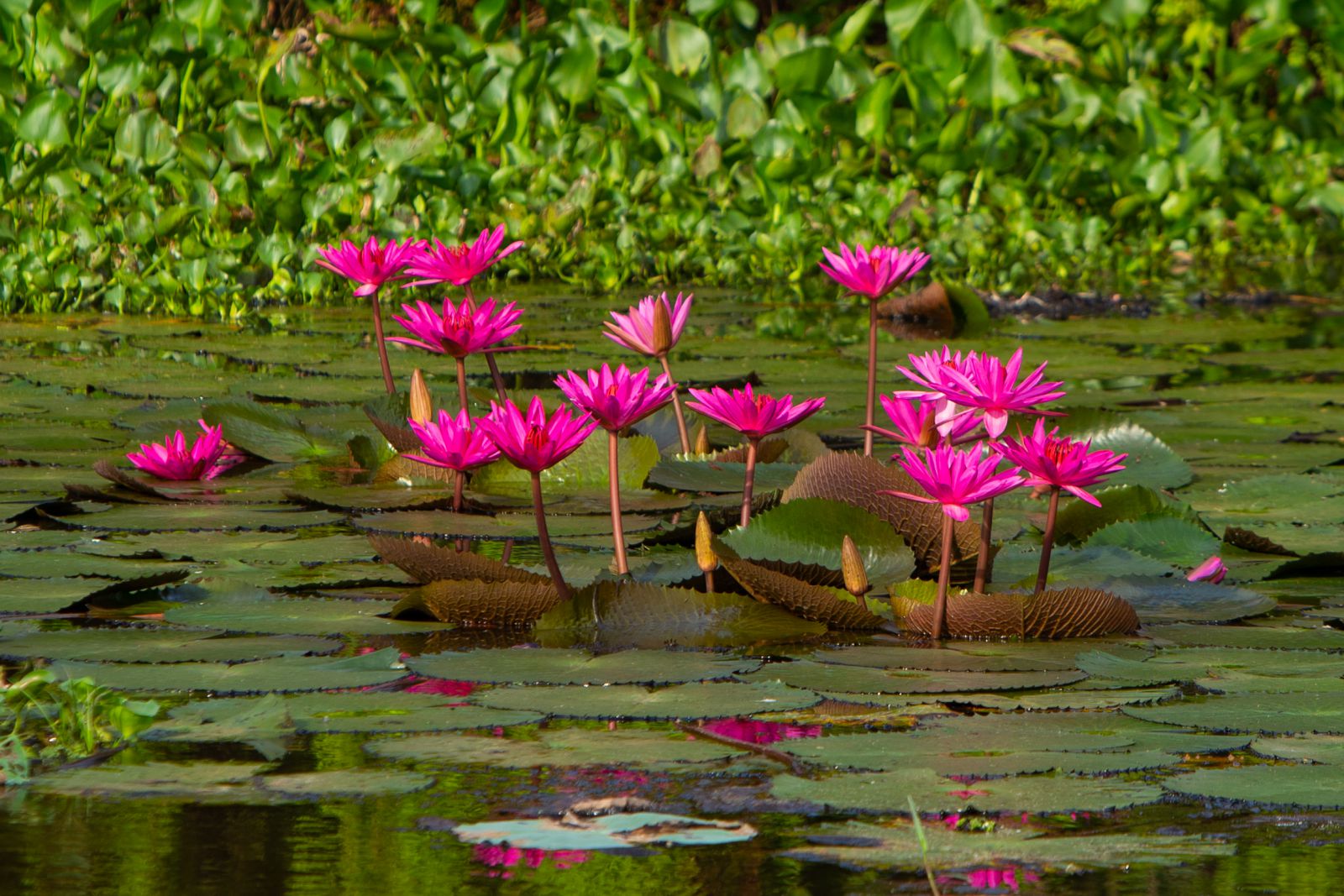
Water lilies.
The hedges of the wild ginger plant have almost completely disappeared in the countryside. Wild ginger is a folk medicine widely used by villagers. When someone has a cold, they crush the wild ginger shoots and mix them with kerosene to treat the ailment. Some people heat the wild ginger shoots until they are very hot and use them to treat the sick. A handful of wild ginger is always included in the steaming water for someone with a cold.
For headaches, I would pick a handful of wild ginger leaves, place them on my forehead, and tie them tightly with a cloth before going to work or sleeping. Back then, there wasn't any Western medicine like there is now. But I think treating illnesses with folk remedies like that would never cause the side effects that come with overuse of Western medicine.
Besides being used as a folk remedy, the plant known as "khúc tần" (a type of medicinal herb) is also a food ingredient. Sometimes, when braising fish, my grandmother would place a handful of "khúc tần" at the bottom of the pot. The "khúc tần" would remove the fishy smell and add flavor to the braised fish dish.
Occasionally, my grandmother would pick the tender shoots of the wild betel plant, boil them, and squeeze out the juice to dip in soy sauce. The men in my village would always have a handful of wild betel shoots as an accompaniment to their carp or crucian carp salad. And especially, dog sausage wouldn't be as delicious as it is if it didn't include wild betel shoots and guava leaves; it's simply a dish you can't miss trying at least once in your life.
I asked many of my friends if they had ever eaten stir-fried papaya pulp, and almost everyone shook their heads. But I ate it regularly when I was still living in the village. When an old papaya tree could no longer bear fruit, or if it was a male papaya tree that had difficulty bearing fruit, or the fruit it did bear was very small and bland, my mother would cut it down.
My mother peeled off the outer skin to get the inner pulp, chopped it into small pieces, soaked it in salt water, rinsed it thoroughly, and dried it. Then she wrapped it in dried banana leaves and put it in a small basket hanging in the kitchen attic. When it was time to eat, she would soak the dried papaya pulp in rice water to soften it, rinse it clean, and then stir-fry it with lard or chicken or duck offal. Papaya pulp prepared this way is crispy, delicious, and unlike anything else.
Many traditional Vietnamese villages have kapok trees. My village has two rows of ancient kapok trees on either side of the road from the main gate to the beginning of the village. During the flowering season, from afar, they look like a huge fire in the sky. It's also the time when starlings from the peaceful limestone mountains fly back to feed on the nectar in the kapok blossoms.
We children would wander around under the kapok trees all day. We would throw a sturdy piece of bamboo at the tree to make the kapok buds fall. These buds are actually kapok flower buds. The buds are delicious to eat. But the young kapok fruit is a delicacy.
We could eat our fill of young kale. Young kale is crunchy, sweet, and slightly slimy. Adults would dip young kale in salt and chili peppers while drinking alcohol. Finely chopped young kale mixed with roasted red shrimp and sesame seeds makes a salad that even the best restaurants can't replicate. But young kale stir-fried with buffalo meat and Vietnamese coriander... oh my, it's incredibly delicious!
Those dishes were genuinely delicious, not just because we were hungry at the time. Similarly, many simple, rustic dishes from rural villages have now found their place on the menus of upscale city restaurants.
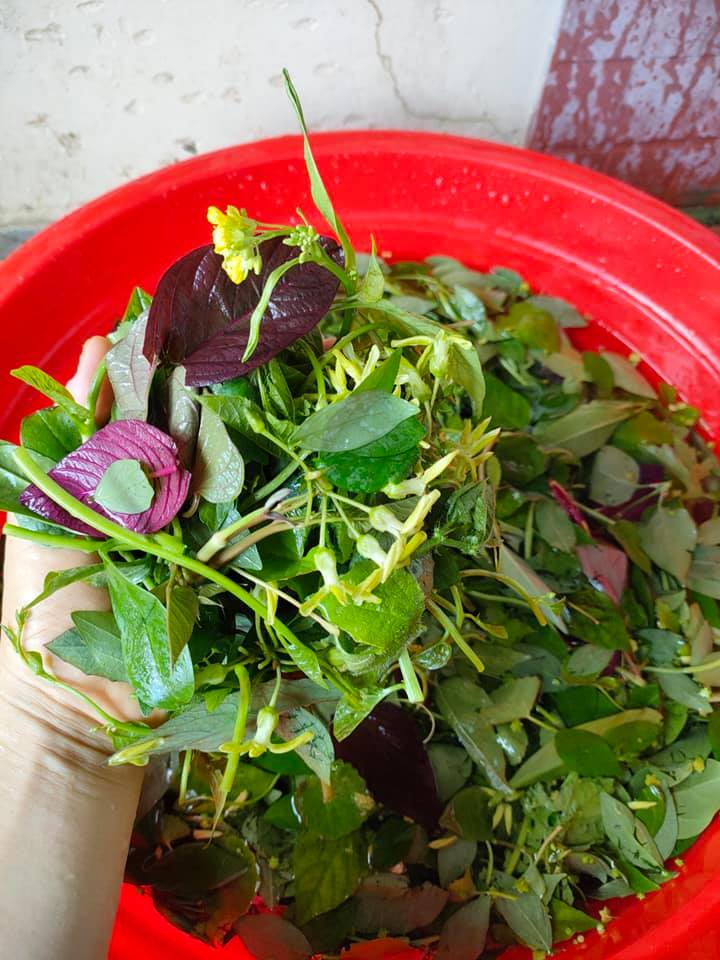
Mixed leafy greens.
Similar to young rice grains, young gao fruit is also often used as a side dish. Young gao fruit is crunchy and has a slightly sour taste followed by a sweet aftertaste.
My village has three large ponds. And in those ponds grows a whole world of water lilies, water chestnuts, and lotus plants. After one or two early summer rains, the water lilies sprout up like a dense forest on the surface of the ponds. I think that water lilies are related to lotus plants, but lotus sprouts are called rhizomes, while water lily sprouts are called water lily shoots. Our ancestors were truly great linguists.
But later linguists didn't seem to study the origins of the names of many plants, animals, insects, and objects. During the water lily season, we would go and pick the young shoots. The bundles of shoots were long, white-green, and so tender that they would break with just a gentle bend.
Water lily shoots are used as dipping sauce or cooked with clam or crab soup. But to make crab soup so delicious that everyone who tries it ranks it among the best soups, you have to use water lily buds. Harvest the buds as soon as they sprout to cook in the crab soup.
When cooking water lily buds, they are cut in half and added to the soup. Just bring it to a rolling boil. Crab soup cooked with water lily buds seems sweeter than soup cooked with other vegetables. Eating raw water lily buds dipped in soy sauce reveals a crisp texture and a very sweet taste.
There's a type of flower bud that I'm not entirely sure what it is. I only heard my grandmother say it's called a water hyacinth bud. Water hyacinth buds are similar to water lettuce buds, also known as water lettuce. Water hyacinth plants usually grow in swamps or ditches.
My grandmother used to pick water hyacinth buds to boil. They were very sweet, though slightly itchy. Perhaps they were a type of water lettuce. Sometimes I would absentmindedly imagine how our ancestors discovered such wild vegetables.
The elders saw the beautiful buds of the wild jasmine plant, picked some, and smelled them. They found the scent pleasant, like that of other wholesome plants, so they tasted them. Finding them cool and sweet, they picked more and boiled them to try. The first time they boiled them too thoroughly, the buds became mushy and had a strong, unpleasant taste. So the next time, they only blanched them briefly, and they were found them crisp and sweet. And so, wild jasmine and similar plants became a food item.
I once asked my mother how she knew which ingredients were edible when she cooked them. She said that if it smelled good and tasted sweet or sour, it was edible. Looking back, I realize that this experience with food was a great life lesson.
And at this moment, I felt as if I were sinking into a dream: a dream of waking up one morning to see fields of various vegetables: water spinach, morning glory, mulberry leaves, fig leaves, watercress, watercress, chili peppers, purslane, duckweed, watercress, sorrel, tamarind, mugwort, white watercress, red watercress, white basil, coin plant, young rice fruit, young gourd fruit, Dinh Lang (a type of herb), spotted sweet potato vine, cassava leaves, Ngai fruit, fig fruit, turmeric leaves, galangal leaves, lotus root, lotus stem, water lily shoots, water lily buds... all growing lush and vibrant.
I will transform into a tiny boy and begin my journey through those chlorophyll-filled forests, to be captivated by the purple water lilies that blanket the universe, to be both fascinated and terrified by a giant civet cat as monstrous as a prehistoric dinosaur, to hear the flapping wings of a swarm of harvest locusts overhead, and to walk amidst the intoxicating fragrance of blooming water spinach...
That dream pained me because, almost half a century ago, it was a reality, but almost half a century later, it has become a source of human disappointment.
Source: https://danviet.vn/canh-dong-rau-dai-o-viet-nam-tranh-thu-hai-nam-rau-dai-moc-vai-chuc-con-cua-nau-bat-canh-ngon-20241107102950382.htm









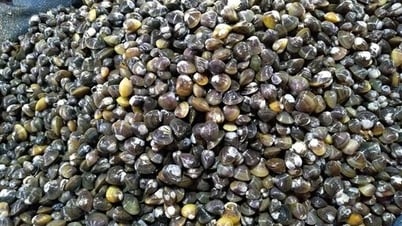









![Passion fruit 'capital' faces sustainability challenge: [Part 3] Building supply chain linkages](https://vphoto.vietnam.vn/thumb/402x226/vietnam/resource/IMAGE/2025/12/12/1765517075835_1232-akk00534-130606_948.jpeg)


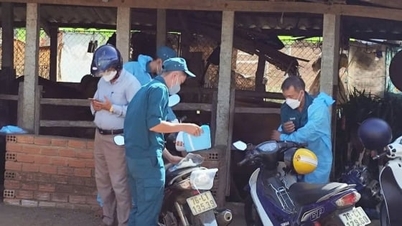






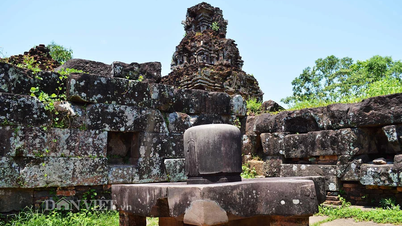



![[Photo] Prime Minister Pham Minh Chinh holds a phone call with the CEO of Russia's Rosatom Corporation.](/_next/image?url=https%3A%2F%2Fvphoto.vietnam.vn%2Fthumb%2F1200x675%2Fvietnam%2Fresource%2FIMAGE%2F2025%2F12%2F11%2F1765464552365_dsc-5295-jpg.webp&w=3840&q=75)








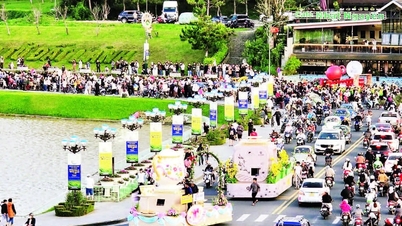

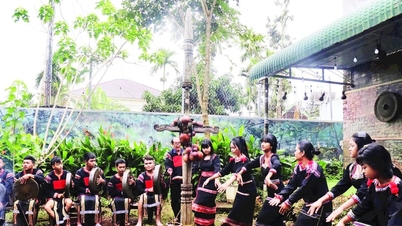







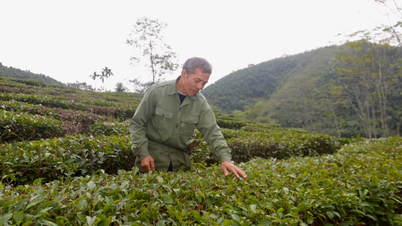





















































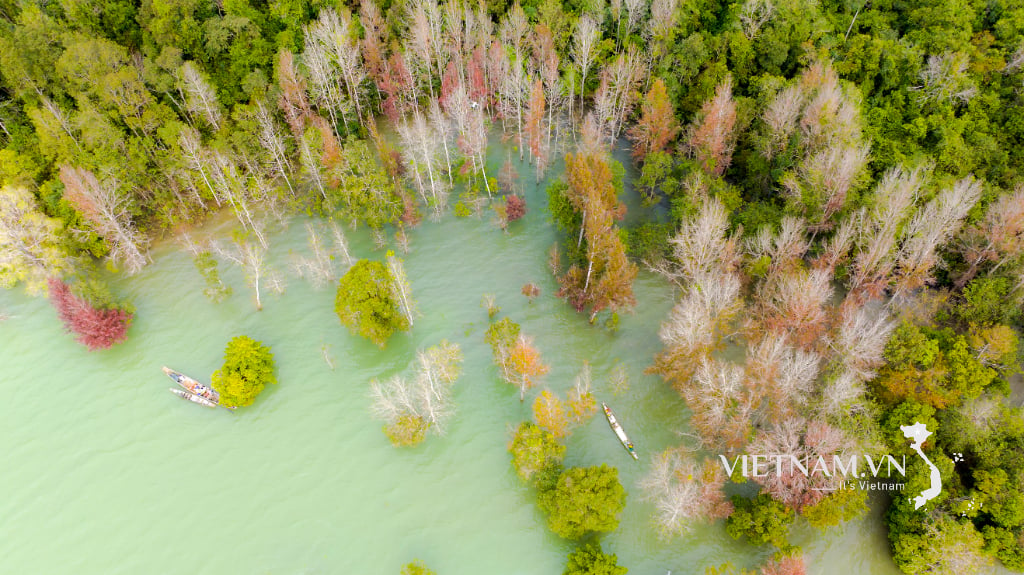



Comment (0)